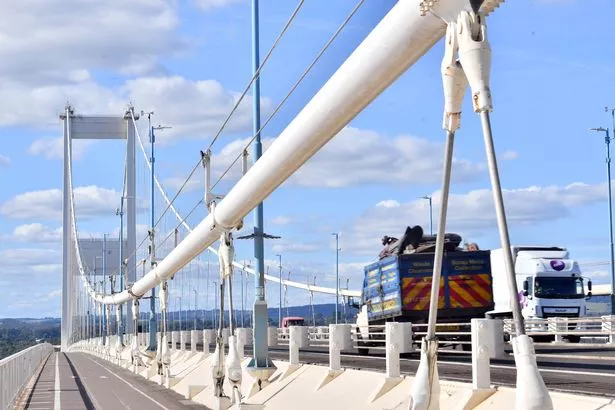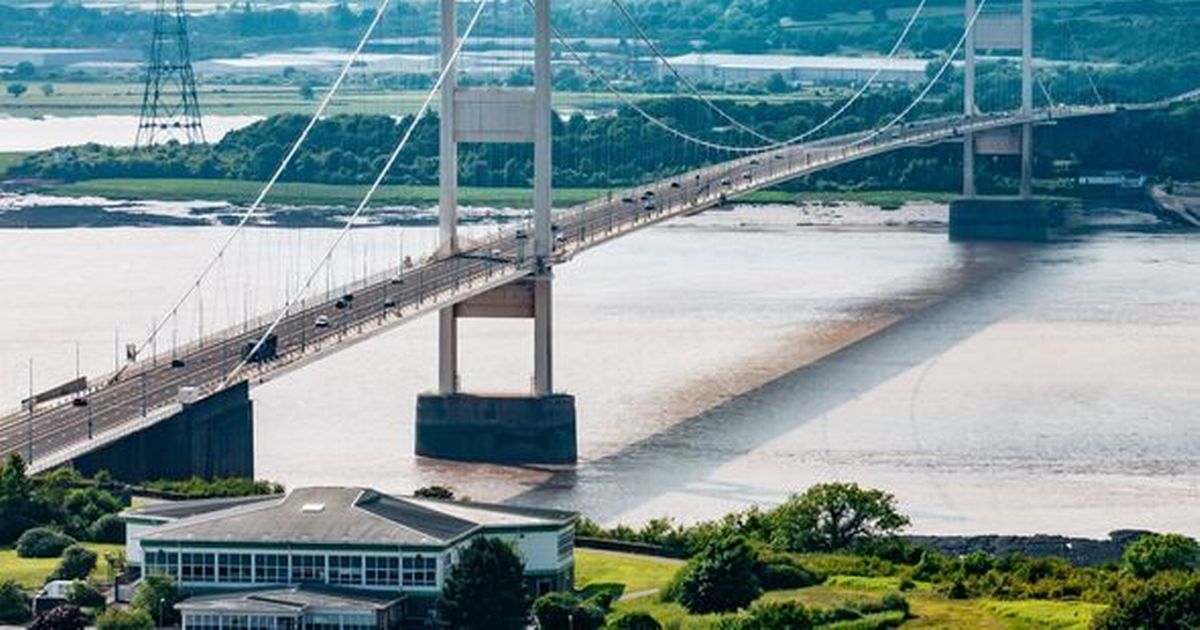“Whilst the bridge remains safe, it was not designed and built for today’s levels or weight of traffic”
17:48, 11 Apr 2025Updated 10:13, 12 Apr 2025
 (Image: (Image: Getty))
(Image: (Image: Getty))
Thousands of lorries that cross the Severn Bridge near Bristol every day will be diverted to the Prince of Wales Bridge instead, because the old bridge’s cables are deteriorating.
Inspections of the 60-year-old bridge, which now carries the M48 between Bristol and South Wales, have found ‘deterioration to the supporting cables’, and so from the end of May, any HGVs over 7.5 tonnes will be diverted onto the M4 Prince of Wales Bridge instead.
National Highways will work with the police to install number plate recognition cameras to help the police catch and prosecute any HGV driver breaching the ban.
They said the weight restriction will be in place for around 12-18 months, to allow more inspections and to come up with a ‘medium-term solution’. They said that could mean allowing HGVs back onto the Severn Bridge, but only a limited number at any one time, to ‘ensure vehicle loads remain within safe limits’.
The bridge was completed and opened back in 1966, at a time when the heaviest lorry on the roads was around 22 tonnes. Now many lorries are 44 tonnes, and there are tens of thousands more HGVs on the roads than in the 1960s.
Sign up to receive daily news updates and breaking news alerts straight to your inbox for free here.
Around 32,000 vehicles cross the old Severn Bridge every day, of which 3,270 a day are over 7.5 tonnes – around ten per cent. The amount of traffic crossing the old Severn Bridge has gone up by a third since the tolls were removed in 2018. Drivers of vehicles weighing more than 7.5 tonnes will have to switch to the M4 Prince of Wales Bridge from Tuesday, May 27.
“Safety is our number one priority, and this weight restriction is about future-proofing the bridge for years to come,” said Chris Pope, the programme delivery manager for National Highways.
“Whilst the bridge remains safe, it was not designed and built for today’s levels or weight of traffic. Vehicles have got heavier and traffic levels have increased significantly over the last 60 years putting greater load on the cables.
“As with all our structures, we will continue to monitor the bridge and ensure it remains safe for users,” he added.
“We’d like to thank drivers for their support and must stress that only heavy goods vehicles up to 7.5 tonnes in weight should use the bridge. Continued use of the bridge by heavier heavy vehicles could ultimately see it closed to all traffic. We are acting now to prevent this from happening,” he added.
 The Severn bridge on the M48 near Chepstow(Image: WalesOnline/Rob Browne)
The Severn bridge on the M48 near Chepstow(Image: WalesOnline/Rob Browne)
A spokesperson for National Highways said there was now a ‘substantial increase in weight over the bridge, which it was not designed for’.
“The M48 Severn Bridge has undergone several major assessments and interventions related to its main suspension cables due to concerns about corrosion and strength reduction, caused by its exposure to harsh weather conditions,” he said.
“In 2022/23, an assessment of the bridge’s main cables was carried out followed by further laboratory testing.
“Finalised in December 2024, the results revealed that the main cables are deteriorating and not as strong. Due to these results, it was recommended National Highways reduce the load on the bridge to minimise further damage,” he added.
